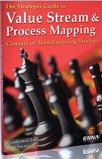Rule # 1
Specifications document all work processes and include content, sequence, timing and outcome.
Rule #1 is one of the most important and least understood of the rules. At Toyota, each
process is specified with detailed instructions. For example, when assemblers install seats with
four bolts, the bolts are inserted and tightened in a precise sequence. Every worker installs
them in the same way, every time.
This regimentation increases the linkage between the way work is done and the results. If
everyone worked in different ways, the link would be broken or obscure. How do we reconcile such
regimented work with the experimentation and concern for individuals that is supposed to be a
part of the system? The answer is that while individual workers cannot vary the process, teams
are required to actively analyze, experiment, change and improve the process.
Rule #1 links closely with the widespread use of TQM, SPC and associated problem-solving
skills. If workers do not possess those skills, Rule #1 is pretty much worthless and even
counterproductive.
This is often seen in an insistence on detail work instructions. Detailed work instructions
are all very well if the process is stable and/or workers have an adequate TQM background.
What usually happens is that engineers write unrealistic instructions with little input from
workers. Nobody involved has an adequate TQM background. Workers cannot follow the instructions
and they are promptly ignored. There is little feedback to the authors. The authors are busy
writing new work instructions for other parts that will also be ignored.
As a result the processes appear to have documentation, but, in practice, do not. Processes
are inconsistent with inconsistent results. Nobody recognizes the inconsistencies or responds to
them.
Quality problems continue, pretty much as before. the whole thing is, at best, a waste of
time. At worst it diverts efforts from a serious attack on problems.
References
SPEAR, Steven and BOWEN, H. Kent, "Decoding the DNA of the Toyota Production System.",Harvard
Business Review, September-October, 1999.
DAVIS, Stanley M., Managing Corporate Culture, Ballinger Publishing, Cambridge,
Massachusetts, 1984.
|
Rule # 2
Connections with clear YES/NO signals directly link every customer and supplier.
This implicit rule gave rise to kanban, Direct Link and other lean scheduling. It tells
us that every operation should send its products to subsequent "customers" directly using
methods and algorithms that are clear and precise. It precludes separate warehouses and separate
people or departments whose only function is inventory management.
Rule # 3
Every product and service travels a single, simple and direct flow path.
Toyota's U-shaped workcells are the ultimate manifestation of this rule. It means that every
piece of finished product has been through the same equipment and precisely the same process. It
improves consistency, makes trouble-shooting easier and simplifies material handling and
scheduling.
Rule # 4
Workers at the lowest feasible level, guided by a teacher (Sensei), improve their own work
processes using scientific methods.
Rule #4 ties closely with Rule #1. It prevents Work Instructions from becoming moribund
memorials rather than living guides. It enlists the entire workforce in the improvement (Kaizen)
efforts.
Rule # 5
Integrated failure tests automatically signal deviations for every activity, connection and
flow path.
This is the concept of Jidoka or Autonomation. It prevents products with unacceptable quality
from continuing in the process. The manifestations of this rule are many, varied, imaginative
and unique to the process. Examples are detectors for missing components, automatic gages that
check each part and visual alarms for low stocks.
Purchase a Reprint of the Original HBR Article

|





